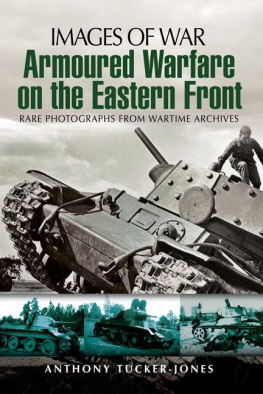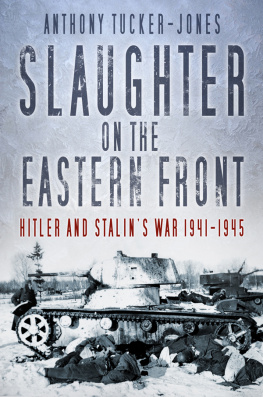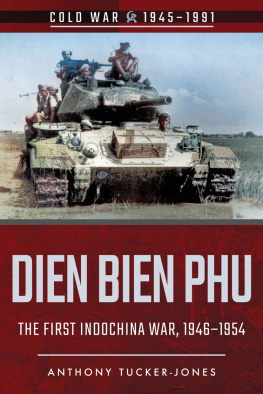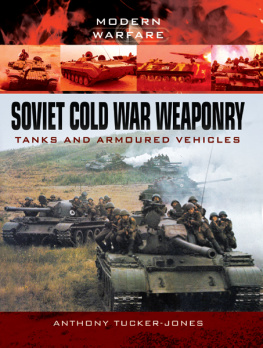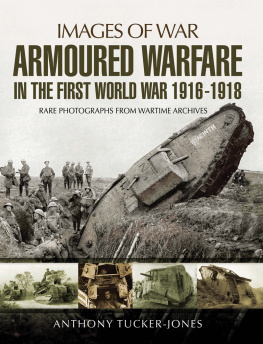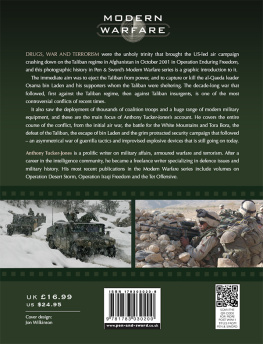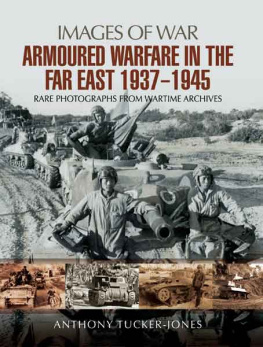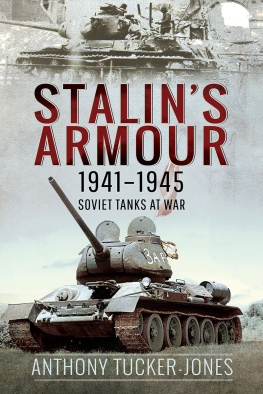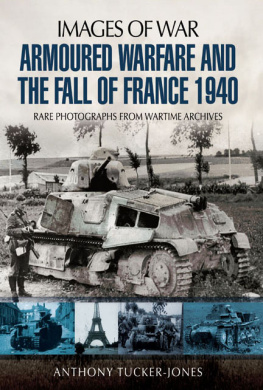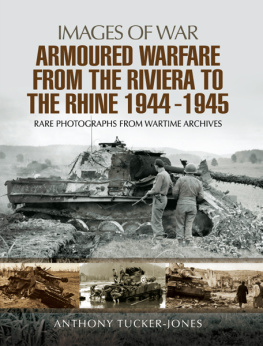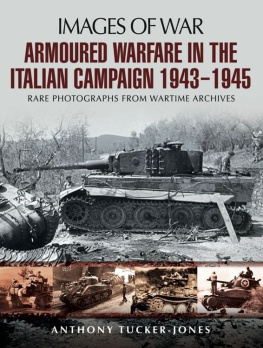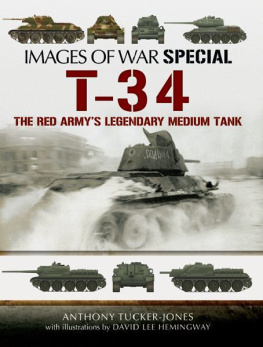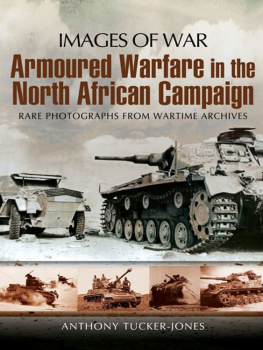
First published in Great Britain in 2011 by
PEN & SWORD MILITARY
an imprint of
Pen & Sword Books Ltd,
47 Church Street,
Barnsley,
South Yorkshire.
S70 2AS
Copyright Anthony Tucker-Jones, 2011
A CIP record for this book is available from the British Library.
ISBN 978184 884 2809
eISBN 978178 303 8220
The right of Anthony Tucker-Jones to be identified as Author of this Work has been asserted by him in accordance with the Copyright, Designs and Patents Act 1988.
All rights reserved. No part of this book may be reproduced or transmitted in any form or by any means, electronic or mechanical including photocopying, recording or by any information storage and retrieval system, without permission from the Publisher in writing.
Typeset by Chic Media Ltd
Printed and bound by CPI
Pen & Sword Books Ltd incorporates the Imprints of
Pen & Sword Aviation, Pen & Sword Maritime, Pen & Sword Military,
Wharncliffe Local History, Pen & Sword Select, Pen & Sword Military
Classics, Leo Cooper, Remember When, Seaforth Publishing and
Frontline Publishing.
For a complete list of Pen & Sword titles please contact
Pen & Sword Books Limited
47 Church Street, Barnsley, South Yorkshire, S70 2AS, England
E-mail: enquiries@pen-and-sword.co.uk
Website: www.pen-and-sword.co.uk
Contents
Preface
M ost military historians have a fascination for contemporary images, which often tell a personal story that is not always immediately available from after the battle intelligence reports, HQ diaries and individual memoirs. They represent a frozen moment in time, contrived or otherwise. Indeed, picture editing is part and parcel of the historians discipline. When it comes to chronicling the massive tank battles fought in the East there is often a notable disparity in the quality of the two sides photographic records.
There is a perception that the Second World War is seen purely in terms of black and white; this is not strictly true, though the vast majority of images were black and white, especially on the Eastern Front. In the West images were generally the result of the work of officially sanctioned war photographers, while in the East German soldiers took thousands of unofficial snapshots in the early stages of the war, many of which are of remarkable quality and clarity. Hundreds if not thousands of German soldiers gleefully posed on top of knocked-out Soviet tanks in the summer of 1941. After victories in Poland, France, the Balkans and now Russia they felt invincible and it showed on their faces. Even today there is a thriving market for such photo albums, many of which have been broken up over the years and their contents scattered among photo libraries and private collectors.
Many of the German photographs taken on the Eastern Front exhibit a greater honesty than the official Soviet photographers, who were always under pressure to glorify the Red Armys achievements. This partly explains why there are always more Soviet action shots, though this is partially compensated for by dramatic German newsreel footage accompanied by strident narration. The only down side is that many images taken by individual German soldiers were often given at best only the most perfunctory captions and therein lies the challenge for the historian, who often has to embark on a degree of detective work to explain exactly what it is we are seeing. By the end of the war in the East it was the Soviets who had the monopoly on photographing the battlefield, as German troops were too busy struggling to survive to worry about chronicling their slow and painful defeat. There was no imperative to photograph the panzers when most lay twisted and shattered by powerful Soviet anti-tank guns.
While it is not too difficult to appreciate the vast scale of the tank battles fought on the Eastern Front, it is less easy to grasp the myriad factors that contributed to either victory or defeat. Essentially armoured warfare on the Eastern Front was shaped by geography, technology and numbers, and Soviet factories soon ensured that the Red Army enjoyed numerical superiority. While Byelorussia and Ukraine were on the whole suited to armoured warfare the Pripyat Marshes helped shape the strategic options of the two sides. Much has been made of Russias many rivers, which ironically did little to protect the Soviet Union from Adolf Hitlers Blitzkrieg, or indeed to impede the Red Armys progress once it had eventually recovered from the initial German onslaught.
In their efforts to counter each others weapons, especially armour, the German and Soviet armies adopted very different approaches. The victories of 1941 in part lulled the Germans into a false sense of security when it came to tank production and development. Crucially the Germans proved incapable of standardisation, producing a plethora of tanks, assault guns and self-propelled guns. The abandonment of the Panzer Mk III in favour of assault guns, essentially a defensive weapon, soon signalled that Hitler had lost the strategic initiative. Subsequent German heavy tanks proved time-consuming to manufacture, were often unreliable and could not be produced in decisive numbers.
The Soviets, on the other hand, were not slow to learn from the disasters of 1941, First, they rescued their vital tank factories, and to buy time threw into combat the remains of their existing tank fleet; then they discarded those tank designs that had been found wanting and concentrated on fine-tuning the T-34. Once this tank had been up-gunned and could be produced in decisive numbers, the fighting largely became attritional. Also Soviet tank designers prudently opted to keep the T-34 simple, robust and easy to build and repair. German tactical and even strategic abilities ultimately counted for little against superior Soviet numbers. Adapting the Blitzkrieg style to their own ends, the Red Army became a metal steamroller that simply pulverised Hitlers panzers.
Photograph Sources
T his book would not have been possible without the able assistance of the Stavka Photo Library run by Eastern Front expert Nik Cornish, who has written and illustrated a number of Eastern Front titles in this Images of War series, and the private Eastern Front collection of Canadian Scott Pick. These two men have built up collections that are unrivalled outside of museum holdings. Both have a fascinating range of images taken by both official war photographers and individual soldiers, depicting the many aspects of the conflict between Nazi Germany and Soviet Russia, many of them previously unpublished.
In particular, many of the Scott Pick images are seeing the public light of day for the very first time and I offer thanks to him for agreeing to share them with us. His collection contains many fine trophy shots, such as those taken by individual German soldiers of their comrades standing triumphantly on top of disabled Soviet armour in the early stages of the war. As readers will see, the clarity of these is outstanding and each tells its own particular and sometimes gruesome story.
Lastly I have also drawn some images from my own collection, which derives from a variety of sources, and again many of these are being published for the very first time. Picture editing is a very subjective art and the final selection in this book rests with me I hope that readers enjoy them.
Photo Credits
The following photographs are courtesy of the Museum of the Armed Forces, Moscow, via Nik Cornish: AO36, AO38, AO41, AO42, AO44, AO45, AO46, AO47, AO48, AO120, AO146, AO153, B84, B89, BA3, BA24, BA51, BA52, BA55, K10, K14, K180, K184, K191, K194 and T49.

